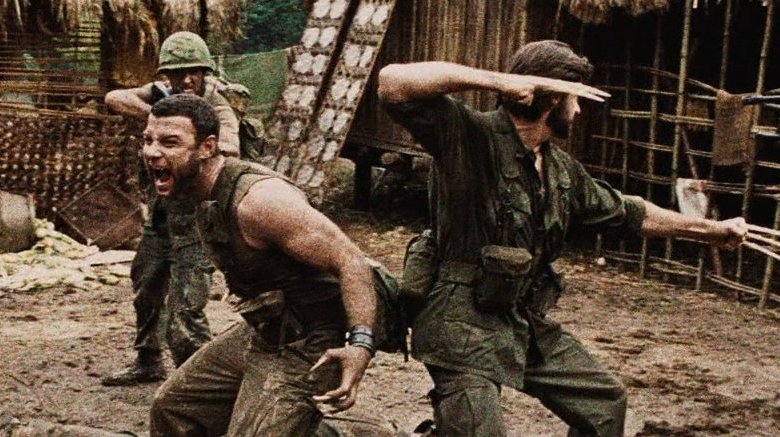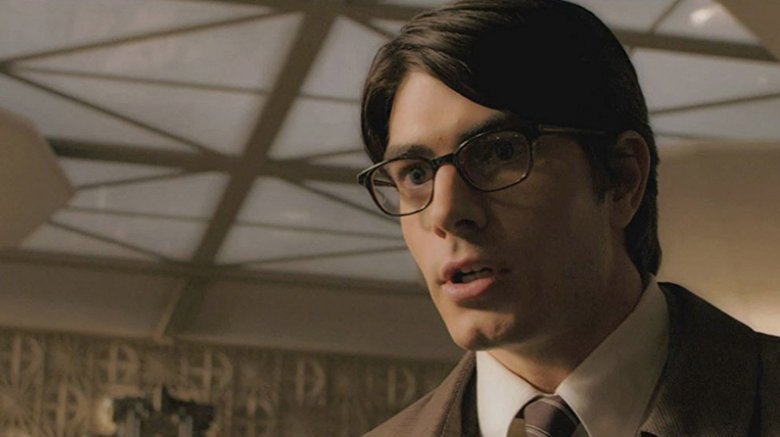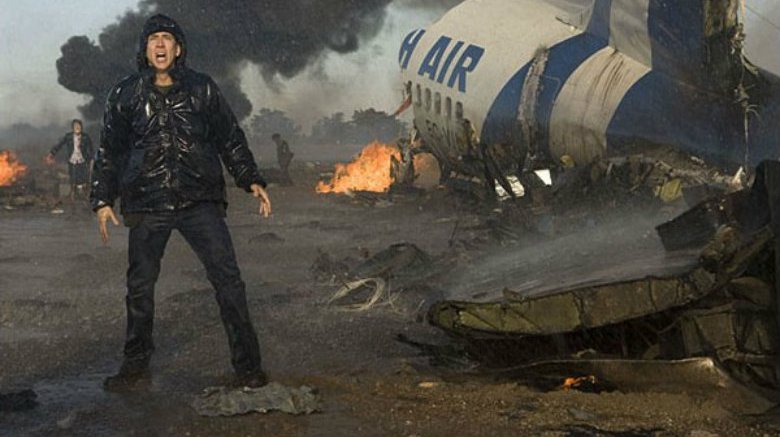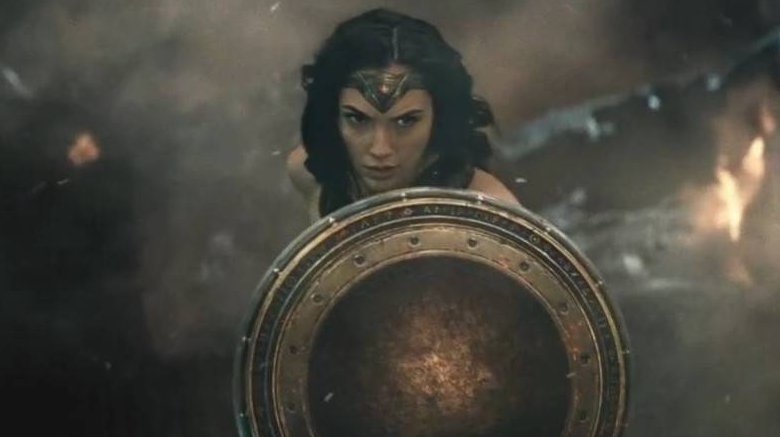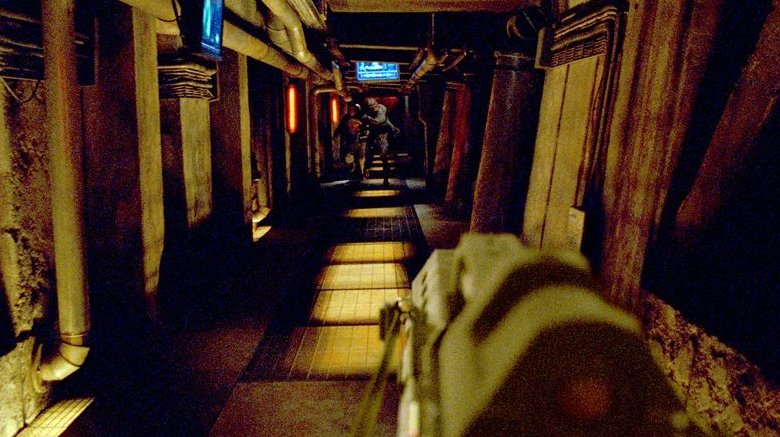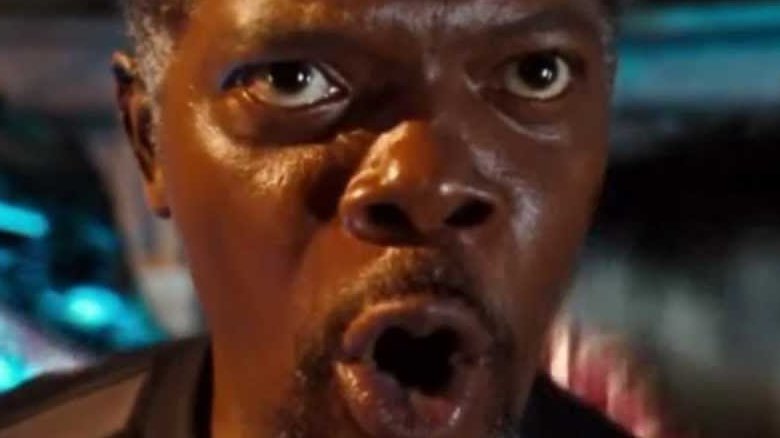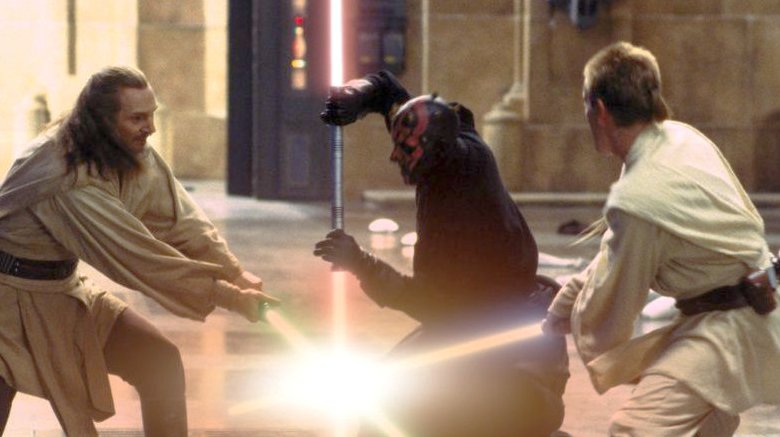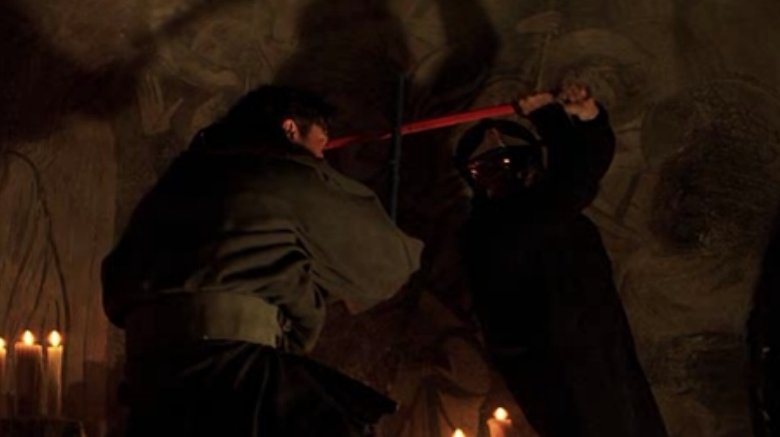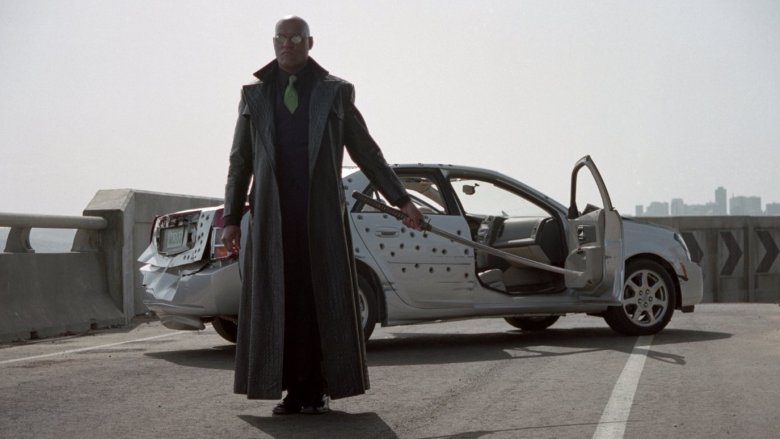Bad Movies That Still Have One Amazing Scene
Cinema is an art form, and like any other type of art, appreciation of it is subjective. Notions of 'good' and 'bad' are never universally agreed upon. Even the 'worst' films of all time have numerous supporters, and no matter how much you might disagree with them, it's impossible to definitively call them out as wrong based on their opinion.
Saying that though, there are a number of movies out there which are generally perceived as 'bad' in the sense that the vast majority of critics and audiences alike denounce them for their perceived lack of quality. Whether you agree with these assessments or not though, even the very worst movies contain moments of hope. No one sets out to make a 'bad' film, and while those included in the following list will never be remembered as the very best that cinema has to offer, each contains at least one amazing scene that goes some way towards redeeming those involved in the film's production.
Young Man Logan in X-Men Origins: Wolverine
Expectations were high for the first solo Wolverine venture, particularly as it was helmed by Gavin Hood, director of the Oscar-winning film, Tsotsi. Unfortunately, a muddled narrative and the lack of memorable set-pieces left audiences clawing at themselves with disappointment, earning X-Men Origins: Wolverine a score of just 38% on Rotten Tomatoes.
However, if you try your best to forget how X-Men Origins: Wolverine almost ruined the character of Deadpool forever, it's worth revisiting the opening credits, which revealed a strong glimmer of Hood's potential in the director's chair. After Logan pops his claws for the first time, the film then takes us through a powerful action montage that follows him and Sabretooth fighting in famous battles lifted from throughout history.
Not only is it fascinating to see the pair duke it out in the US Civil War and then go on to fight in the trenches of World War I, but the sequence also tells a story, gradually revealing more and more tension between the two which would later become integral to the plot of the ensuing film. Beautifully shot and thematically tight, the opening scene for X-Men Origins: Wolverine promised a great film that Hood unfortunately couldn't deliver.
Clark gets an eyeful in Superman Returns
Eye-popping spectacle is nothing new to the portrayal of Krypton's Last Son on screen, but ironically enough, the Superman film that features the least action is also the one that's somewhat redeemed by a scene which revolves around his eyeball.
The moment in question takes place around the midway mark of Superman Returns when a bank robber shoots the Man of Steel point blank in the eye. However, just like the minigun he used before, this attack proves fruitless, and the bullet instead crumples against Superman's eyeball before falling to the ground.
It's a small moment, but this scene proves that even the kind of powers that Superman has can still be depicted in exciting, new ways, decades after the character first hit the public consciousness. While future movies starring the Last Son of Krypton would prove to be even more divisive, this one scene in Superman Returns remains one of the finest in the franchise, reminding audiences exactly why Superman is also known as the Man of Steel.
Knowing stuck the landing on one scene: its crash
Nicolas Cage has become renowned for bizarre film choices that often delve into the realms of self-parody. Knowing is a prime example of this, somehow incorporating an alien menace with elements of both math and horror to create a mostly terrible movie. As usual, Cage gives his all, adding his own unique form of mania to the proceedings, but in the middle of Knowing also lies a powerful scene that draws upon the very best elements of disaster film spectacle.
In this sequence, hero John Koestler encounters a horrific plane crash up close and searches through the wreckage to save as many people as he can. Here, director Alex Proyas shows off the talents he cultivated on cult films like The Crow and Dark City, tracking through the remains of the plane in one single long shot that's even more intense and scary than you might imagine. As survivors and burn victims alike seek Koestler's help, the devastating helplessness of it all hits the audience like nothing else in this film, including the rather dreary ending.
A wonderful entrance in Batman v Superman: Dawn of Justice
It's both shocking and rather telling that Wonder Woman took so long to hit the silver screen. Despite making her debut back in 1941 before starring in her own '70s TV show, the Amazonian Princess wasn't deemed worthy of being portrayed cinematically until Zack Snyder's superhero epic hit theaters in 2016.
DC fans will vehemently defend Batman V Superman: Dawn of Justice until the day they die, even though critics were quick to slam this DCEU instalment for its lack of subtlety and an overwhelming focus on the darker side of superheroics. Whether you love or hate the film though, it's hard to deny that the introduction of Wonder Woman is extraordinary and actually steals the spotlight from the two headliners with ease.
Gal Gadot embodies the role like she was born to play it and even though she too would become embroiled in a lifeless CGI slugfest with Doomsday towards the end, the first time we see Wonder Woman in costume remains a shining light in the gloom of the DCEU.
First-person cinema in Doom
In his long and varied career, we doubt that The Rock regrets much, yet when quizzed about his worst movies, Dwayne Johnson returns to Doom time and time again. As far as video game adaptations go, Doom is easily one of the worst in recent memory, winning a score of just 19% on Rotten Tomatoes. Somehow though, director Andrzej Bartkowiak surprised us all with one scene that's far more inventive than the rest of the film combined and speaks to the potential of video game adaptations by bridging the gap between the two mediums.
During a scene where Karl Urban's Reaper sneaks through the Mars-based facility, the camera suddenly switches to a first-person perspective, emulating the viewpoint that gamers take when playing the actual Doom video games. In this moment, the audience becomes one with Reaper, helping him gun down the constant barrage of zombies and demons that try to take him out for good. If only the rest of the film could have been as inspired, perhaps the video game movie curse could have finally been broken for good.
A sharknado of horrors in Deep Blue Sea
Long before the Sharknado franchise drowned the shark genre in a sea of camp mediocrity, director Renny Harlin took a huge bite out of the box office with his B-movie blockbuster Deep Blue Sea. As far as popcorn flicks go, the film was a resounding success, but critics who judged Deep Blue Sea on its actual merits found it to be somewhat lacking, despite the booming presence of Samuel L. Jackson.
Of course, the acclaimed actor still delivered the kind of unforgettable performance that we've come to expect from him, giving a rallying speech that changed the entire dynamic of the film. While the dialogue itself embraced the film's B-movie origins with glee, the truly shocking and yet wonderful part of this scene comes mid-speech when a shark suddenly leaps out of the water behind Jackson and devours him completely. In a world where social media hadn't yet figured out ways to spoil the plots of movies on a daily basis, this sudden death became one of the last great surprises of cinema and instantly elevated what could otherwise be considered a rather average film.
The Phantom Menace was double edged sword
Sixteen years passed between the release of Star Wars: Episode VI — Return of the Jedi and the start of the prequel trilogy. In that time, hype for a cinematic return to a galaxy far, far away built to an all-time high, building expectations that Star Wars: Episode I — The Phantom Menace could never match. Even then though, a number of unfortunate missteps ensured that the first Star Wars prequel would be remembered as one of the worst chapters in the franchise, earning a measly score of 55% on Rotten Tomatoes.
However, amongst all of the unnecessary exposition and wooden acting on display, one particular scene still stands out in The Phantom Menace as a pinnacle of the franchise. Of course, we're referring to the epic fight sequence involving Sith apprentice Darth Maul and his double-bladed lightsaber. Stunt performer Ray Park imbued the fight with a new kind of grace and almost balletic skill that the series had never seen before.
While Darth Maul's role in the franchise came to an end far too soon, the impression that he left behind on audiences goes some way towards redeeming The Phantom Menace and its inclusion of the eternally irritating Jar Jar Binks.
The dragons strike back in Reign of Fire
Matthew McConaughey and Christian Bale do their best to lift this action-packed tale of dragons beyond mediocrity, but Reign of Fire quickly crashed and burned, scraping just 40% on Rotten Tomatoes. While it's fun on a campy level, the film's best scene actually has nothing to do with the dragons at all and instead focuses on the human characters.
Living in a post-apocalyptic world, the poor deprived children grow up in this film without knowing the joys of seeing Star Wars in the cinema. Quinn (Christian Bale) and Creedy (Gerard Butler) try their best to rectify this by acting out Star Wars: The Empire Strikes Back as a play for the kids. During their reenactment of the lightsaber duel between Luke Skywalker and Darth Vader, Quinn pretends to cut off Creedy's hand, much to the shock and dismay of the young audience. In a sweet aside, Creedy then breaks character for a moment to let them know that he's actually okay.
If there had been more scenes like this throughout the rest of the film, then perhaps Reign of Fire could have reigned at the box office too, instead of being the commercial failure that it quickly became known to be.
The birth of Sandman in Spider-Man 3
Sam Raimi struck gold with his first two Spider-Man adaptations, finally bringing the Wallcrawler to life on screen with the same kind of fluidity that he had become known for in the comics. Unfortunately, Spider-Man 3 tried to cram far too much story into what was already a rather lengthy film, and ultimately, Raimi couldn't get a handle on the various elements that vied for his attention in this third installment.
Funnily enough, the one scene that people seem to remember most is the cringeworthy "Emo dance" sequence in the street which has since become popularized as a meme, but the best moment by far doesn't involve Spider-Man at all. Instead, Raimi takes a moment to show off his directorial flourishes in the incredible sequence where the Sandman first develops his powers, depicting his transformation with a poetic beauty that feels out of place in the film as a whole.
In a triumph of special effects and artistry, the audience watches as Flint Marko slowly realizes what he has become, reaching out to a locket with his daughter's picture inside only for his fingers to crumble as he tries to grab it. Without any dialogue, we immediately know exactly what the newly birthed Sandman is thinking and as the music swells, our hearts do too.
Hit the freeway in The Matrix Reloaded
Just like Neo's world was forever changed by the events that took place in The Matrix, so too was action cinema forever altered after the The Wachowski's hit the scene with their trippy sci-fi epic. Naturally then, expectations were astronomically high for the sequel. But The Matrix Reloaded didn't deliver the goods, featuring dime-store philosophy that just didn't hold the same impact the second time round.
However, this doesn't mean that the visuals went downhill too. With a much larger budget, the Wachowskis pushed the boat out to make the sequel look even better than the first film, and nowhere was this more clear than in the freeway chase sequence, which assaulted the senses like no other.
At a cost of $2.5 million, the Wachowskis built a fake freeway in California to stage the film's most dramatic action sequence and it paid off. Fending off ethereal dreadlocked entities, our heroes pulled out all the stops in a dazzling fight sequence that easily matched the dizzying heights of the first film, even if the rest of the sequel didn't manage to do the same.

